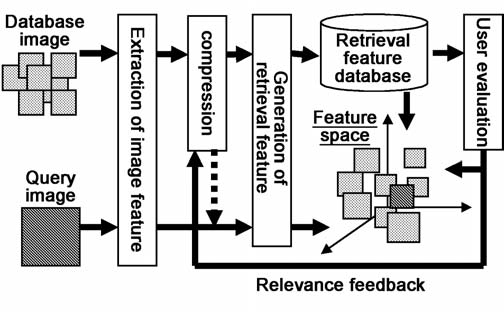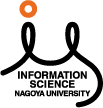Comprehensive List of Researchers "Information Knowledge"
Department of Media Science
- Name
- MATSUMOTO, Tetsuya
- Group
- Speech and Image Science Group
- Title
- Assistant Professor
- Degree
- Dr. of Engineering
- Research Field
- Neural network / Image processing / Pattern recognition

Current Research
Construction of Flexible Multimedia Information Processing Systems
OUTLINEWe are promoting research on information systems that recognize multimedia data consisting of images, audio, etc. Such systems can also understand by using statistical learning techniques, neural networks, etc. In general, users of the system possess different preferences and purposes and use it based on their individual methods. How is diversity on the user side absorbed by the learning ability of the system ? How can the system correspond to individual purpose ? Our goal is to construct a flexible learning system that can correspond to the individual diversity of users.
TOPICS
(1) Construction of a Content Based Image Retrieval (CBIR) system intended for arbitrary images
Recently, PCs have become able to accumulate an enormous amount of digital images. However, it is difficult to effectively utilize these images because they are usually out of order. If not adequately structured, we cannot find the necessary data although, ironically, it actually does exist. In general, to give structure to an image set based on feature vectors obtained from the image without knowing the actual image category, such information compression techniques as principal component analysis or a Self Organization Map can be used. These techniques give the structure expressed by the lower essential dimension calculated from all feature vectors. However, the entire image set need not necessarily be evenly expressed for user purposes. In usual cases, user interest is concentrated on a specific area, which he wants to express in detail. Our research combines a self-organizing learning technique based on unsupervised data and a supervised learning technique based on relevant user feedback. It achieves adequate feature representation because it agrees with each user's purpose and preference.
(2) Construction of the statistical learner model in E-Learning environment
Recently, WEB type E-learning has spread rapidly due to the explosion in the use of computers and broadband. Undoubtedly, WEB type E-learning will perform a key role in education when the future ubiquitous information processing environment is finally achieved. Although currently the main concern addresses efficiency, degree of study freedom etc., in the future E-learning's uniformity will become a big issue. In traditional education, the educator corresponds to individual learner needs, but such an approach places a great responsibility on educators. While WEB type E-learning makes it possible to educate a huge number of people, careful individual learning becomes impossible. In this research, each learner's learning model is constructed to correspond to the individuality of learners, and it also estimates the learning state of each learner. By implementing an educational support system based on individual learner models, we can construct a WEB type E-learning system that produces greater educational effect.
FUTURE WORK
We are mainly researching intellectual learning systems centered on recognition and understanding images. Through such research, it becomes difficult to achieve estimation and a learning system that can adapt to user reactions, that is, humans. We aim to construct an adaptive system that can estimate and learn uncertain reactions, individuality, and human emotions in the future.

Figure : Outline of CBIR system
Career
- Tetsuya Matsumoto received a Dr. of Engineering degree in information Engineering from Nagoya University in 1996.
- In 1993, he joined the Education Center for Information Processing, Nagoya University.
- In 2003, he moved to the Department of Media Science, Graduate School of Information Science, Nagoya University.
Academic Societies
- IEICE
- JNNS
- JSAI
Publications
- Detecting partial duplications in an image -The improvement of estimating rotation angle and reversal-, IEEJ Transactions on Electronics, Information and Systems, 131(12), 2121-2122 (2011).
- Multi-objective genetic programming with redundancy-regulations for automatic construction of image feature extractors, IEICE Transactions on Information and Systems, E93-D (9), 2614-2625 (2010).
- Evaluations of Feature Extraction Programs Synthesized by Redundancy-removed Linear GP: A Case Study on Lawn Weed Detection Problem, Journal of Information Processing, 18 (4), 164-174, (2010).








